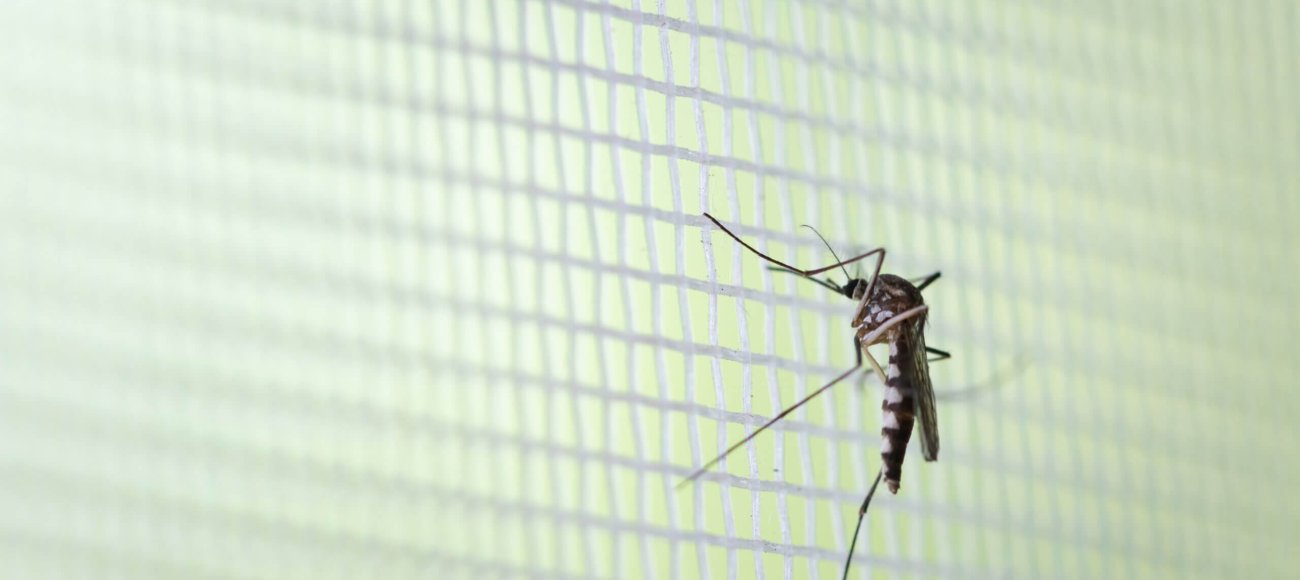Arm-in-cage testing is an important testing method in entomology research designed to determine the efficacy of insect repellents. It measures the interaction between mosquitoes and the repellents under test in a controlled environment hence providing valuable data on how well a repellent product can prevent mosquito bites. This testing technique is paramount to public health since it aids in developing solutions for controlling vector-borne diseases like malaria, dengue, and Zika virus.
Unlike other techniques, arm-in-cage testing provides direct, observable interactions between mosquitoes and the treated skin thus allowing accurate measurement of the efficacy of a given repellent. This article describes the scientific principles governing the test, the testing procedure, the types of repellents evaluated, and the role of the test method in public health.
What is arm-in-cage testing?
The Arm-in-cage test assesses a repellent’s effectiveness against mosquito bites and provides quantifiable data about the duration and intensity of protection offered by the repellent substance. This test procedure typically involves placing mosquitoes in a small cage and introducing a section of the subject’s arm into the cage. The behavior of mosquitoes, specifically the landing or biting rates are observed and the repellent’s effectiveness is determined by how well it prevents these actions. This method is pivotal in evaluating different insect repellents, both chemical and natural, for consumer use.
Why does mosquito behavior matter?
One of the key reasons for using mosquitoes in arm-in-cage testing is their unique and well-studied behavior. Mosquitoes, especially species like Aedes aegypti and Anopheles, exhibit predictable behaviors in response to olfactory and thermal stimuli. These behaviors are consistent enough that they allow researchers to assess the effectiveness of a repellent under near-laboratory conditions, simulating field conditions. Understanding mosquito behavior at this granular level ensures that the results of arm-in-cage tests are not only reliable but also applicable in real-world settings.
Scientific principles behind arm-in-cage testing
Arm-in-cage test relies on several scientific principles, particularly in relation to mosquito behavior. Research has established that mosquitoes are attracted to a host through a combination of sensory cues: CO₂ emission, body heat, and specific odors released by the human skin.
Mosquito sensory mechanisms
Mosquitoes use a combination of olfactory, thermal, and visual cues to locate their hosts. The most significant factors include:
Olfaction (smell)
- Mosquitoes are sensitive to carbon dioxide (CO₂) exhaled by human breath which is one of the primary long-distance attractants. Besides carbon dioxide, mosquitoes recognize the smell of human skin which is composed of many volatile organic compounds (VOCs) such as lactic acid, ammonia and fatty acids.
Thermal sensing (heat)
- After the mosquito locates a host, it detects heat guiding it to the warmest parts of the human body. The thermal gradient allows the mosquito to find a place with exposed skin areas suitable for blood-feeding.
Visual cues
- Though smaller in magnitude as compared to the first two, visual cues are also utilized by mosquitoes while locating a target. These visual cues often range from contrasting colors to simple movements.
How do mosquito repellents work?
Repellents work either by masking the host-emitted signals or by actively repelling the mosquito from the treated surface hence interfering with their ability to sense and process them. The following are some of the major modes of action:
Olfactory disruption
- Repellents like DEET or picaridin counteract the olfactory ability of a mosquito to locate hosts by saturating its olfactory receptors with non-host-related compounds or by rendering the host’s odors undetectable. This prevents the mosquito from identifying humans as potential feeding targets.
Contact repellency
- Some repellents act as a chemical barrier, which mosquitoes avoid. Upon contact, the mosquito’s neural pathways will be disturbed, thus leading to deterrence. This is highly valuable for arm-in-cage tests, as treated skin must exhibit effective repellency for long periods.
Volatility
- The vapor pressure of the repellent determines how readily it evaporates and spreads in the air. The higher the volatility, the more easily the repellent forms a protective “aura” around the skin to prevent the mosquito from landing. However, this also limits the duration of protection as volatile substances tend to diffuse from the skin faster.
Why is the arm-in-cage setup effective?
The above-mentioned interactions can be directly observed using arm-in-cage testing. The scientific validity of the test lies in isolating variables such as the number of mosquitoes, the concentration of the repellent, and environmental factors like temperature and humidity. Using this setup, testing professionals can precisely measure:
Landing rate: How often do mosquitoes attempt to land on the treated area?
Biting rate: The number of successful bites.
Time to first bite: How long does the repellent remain effective before mosquitoes bypass it?
Repellent duration: The total time the repellent offers protection, displaying true field effectiveness.
These metrics are important to compare the performance of different repellents and ensure that the results can be generalized across populations.
Types of repellents tested using arm-in-cage method
Arm-in-cage tests are used to evaluate a wide spectrum of repellent formulations from chemical-based to natural repellents. The wide range of products tested reflects the broad array of solutions developed to protect people against mosquitoes.
Chemical repellents
- The most well-known chemical repellent tested using the arm-in-cage method is N,N-Diethyl-meta-toluamide, more commonly known as DEET. DEET has conclusively been proven to be an extremely effective repellent in many tests and is considered to be the benchmark for comparing the efficacy of other mosquito repellents. Other chemicals, such as picaridin, IR3535, and permethrin are tested using this method as well. These repellents work by either confusing the mosquito’s olfactory senses or creating a barrier that mosquitoes are less likely to cross.
Natural repellents
- The arm-in-cage test also applies to natural repellents that include citronella and eucalyptus oil, among a few other botanical compounds. These products are gaining popularity due to concerns over chemical exposure specifically among people seeking eco-friendly and less-toxic options. In most arm-in-cage tests, the efficacy of these natural repellents is compared directly against a chemical standard like DEET.
Ethical considerations
While the arm-in-cage test itself is safe, some ethical considerations must be accounted for, particularly regarding the comfort and safety levels of participating human volunteers. Testing professionals follow strict protocols to minimize risks including monitoring any possible adverse skin reactions from the test and making sure that the test mosquitoes used are disease-free.
Regulatory requirements
Arm-in-cage testing should be done according to the set regulatory standards by agencies such as the World Health Organization (WHO) and the Environmental Protection Agency (EPA). These agencies set the guidelines for testing methods to ensure that the results obtained are scientifically correct and ethical.
Advantages of arm-in-cage testing
The arm-in-cage method offers several advantages, making it a preferred choice for evaluating insect repellents:
Controlled environment
- The controlled test conditions help in the exact measurements of repellency without interference from other environmental factors. Variables like wind, temperature and humidity are controlled to ensure reproducible test results.
Repeatability and replicability
- The test ensures consistent and reliable test results which is required for regulatory approval and product comparisons. The ability to repeat the same conditions allows the generation of reliable data—perhaps the core strength of this method.
Versatility
- The method can be adapted to test a broad array of repellents, including lotions, sprays and treated clothing. It may also be used for the relative comparison between several products during a single test, which is very useful during product development.
Applications in public health
Arm-in-cage test indirectly helps in the fight against mosquito-borne diseases like malaria, dengue and Zika.
Developing insect repellents
- The most common use of arm-in-cage testing is the development and improvement of repellents. It yields valid data on the actual duration of efficacy of a product thus helping fine-tune the formulations to get maximum protection.
Controlling vector-borne diseases
- Beyond commercial products, arm-in-cage testing has an important role in vector control programs. Data generated from such tests contribute to strategies aimed at reducing the spread of diseases by ensuring that repellents used in public health campaigns are effective against the target mosquito species.
The arm-in-cage test continues to be the most effective and reliable assay for mosquito repellents. Its controlled setup, scientific principles and versatility offer an invaluable tool for both product development and public health initiatives. As the world continues to fight mosquito-borne diseases, arm-in-cage testing will continue to be a cornerstone in ensuring repellents and control measures are safe, effective, and can meet the growing challenges of vector-borne diseases.
At Microbe Investigations Switzerland, we offer comprehensive Arm-in-Cage testing services to accurately evaluate the efficacy of mosquito repellents. Our advanced methodologies and expert insights ensure your products provide reliable protection against mosquitoes, meeting the highest industry standards. Enhance your product development with our proven testing solutions.
To learn more about our Arm-in-Cage testing services or to schedule a consultation, please contact our specialists today.














